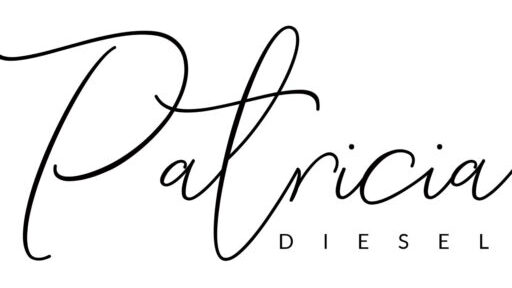It’s a continual debate…
Articles will continue to be published on statistics, theories and philosophies of how clutter can be a sign of genius or a manifestation of emotional turmoil.
Yet on the other hand, there are studies and evidence of how the skill set of organization and tidy ways can enhance one’s quality of life, while others may argue it can stifle the flow of creativity.
I have been around enough clutter to feel confident in my belief system when I express my opinion of it. Yet, I have also been exposed to the purest of minimalists to have a strong opinion on this lifestyle as well.
Is it really a lifestyle that one chooses or is it a life that is out of control?
There is a lot to be said on this subject – way too much for one blog post.
GRAY MATTER
It’s Not ‘Mess.’ It’s Creativity.
By KATHLEEN D. VOHS
Published: September 13, 2013
- GOOGLE+
- SAVE
- SHARE
- REPRINTS
MESSY or tidy — which is better?
Historically, the evidence has favored the tidy camp. Cleanliness, as the proverb says, is next to godliness. The anthropologist Mary Douglas noted almost 50 years ago a connection between clean, open spaces and moral righteousness. More recently, psychologists have shown that the scent of citrus cleaning products is enough to raise people’s ethical standards and promote trust. Conversely, in another study, people were found to associate chaotic wilderness with death.
But if messiness is so bad, why do so many people tolerate, and even embrace, it?
Not long ago, two of my colleagues and I speculated that messiness, like tidiness, might serve a purpose. Since tidiness has been associated with upholding societal standards, we predicted that just being around tidiness would elicit a desire for convention. We also predicted the opposite: that being around messiness would lead people away from convention, in favor of new directions.
We conducted some experiments to test these intuitions, and as we reported in last month’s issue of the journal Psychological Science, our hunches were borne out.
For our first study, we arranged rooms in our laboratory to look either tidy, with books and papers stacked and orderly, or messy, with papers and books strewn around haphazardly. Then we invited 188 adults to visit our laboratory individually, ostensibly for a consumer-choice study. Each subject was assigned to either a messy or a tidy room, where he or she was shown a menu from a deli that made fruit smoothies. The smoothies were said to come with a “boost” (added ingredients) from which there were three options to choose — a health, wellness or vitamin boost.
We created two versions of the menu. Half of the subjects saw a menu that had the word “classic” highlighting the health boost option, whereas the other half saw the health boost highlighted by the word “new.” Then our subjects made their choices.
As predicted, when the subjects were in the tidy room they chose the health boost more often — almost twice as often — when it had the “classic” label: that is, when it was associated with convention. Also as predicted, when the subjects were in the messy room, they chose the health boost more often — more than twice as often — when it was said to be “new”: that is, when it was associated with novelty. Thus, people greatly preferred convention in the tidy room and novelty in the messy room.
Given that divergence from the status quo is the essence of ingenuity, we conducted a second experiment to test whether messiness fostered creativity.
Forty-eight research subjects came individually to our laboratory, again assigned to messy or tidy rooms. This time, we told subjects to imagine that a Ping-Pong ball factory needed to think of new uses for Ping-Pong balls, and to write down as many ideas as they could. We had independent judges rate the subjects’ answers for degree of creativity, which can be done reliably. Answers rated low in creativity included using Ping-Pong balls for beer pong (a party game that in fact uses Ping-Pong balls, hence the low rating on innovation). Answers rated high in creativity included using Ping-Pong balls as ice cube trays, and attaching them to chair legs to protect floors.
When we analyzed the responses, we found that the subjects in both types of rooms came up with about the same number of ideas, which meant they put about the same effort into the task. Nonetheless, the messy room subjects were more creative, as we expected. Not only were their ideas 28 percent more creative on average, but when we analyzed the ideas that judges scored as “highly creative,” we found a remarkable boost from being in the messy room — these subjects came up with almost five times the number of highly creative responses as did their tidy-room counterparts.
(These results have been confirmed by independent researchers at Northwestern University, who found that subjects in a messy room drew more creative pictures and were quicker to solve a challenging brainteaser puzzle than subjects in a tidy room.)
Our findings have practical implications. There is, for instance, a minimalist design trend taking hold in contemporary office spaces: out of favor are private walled-in offices — and even private cubicles. Today’s office environments often involve desk sharing and have minimal “footprints” (smaller office space per worker), which means less room to make a mess.
At the same time, the working world is abuzz about cultivating innovation and creativity, endeavors that our findings suggest might be hampered by the minimalist movement. While cleaning up certainly has its benefits, clean spaces might be too conventional to let inspiration flow.
Kathleen D. Vohs is a professor of marketing at the Carlson School of Management at the University of Minnesota.


